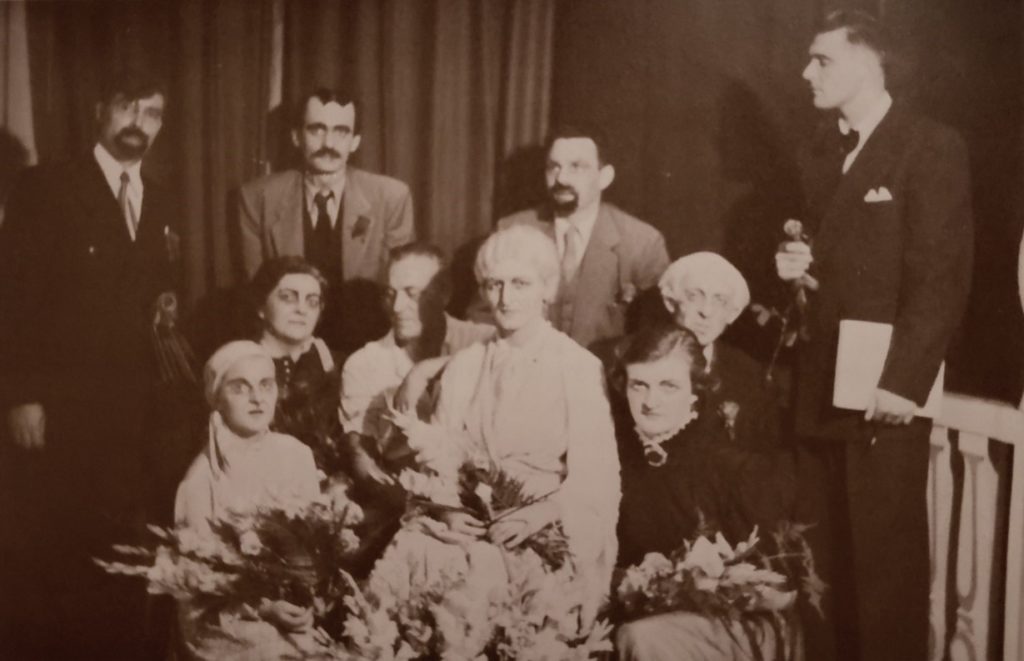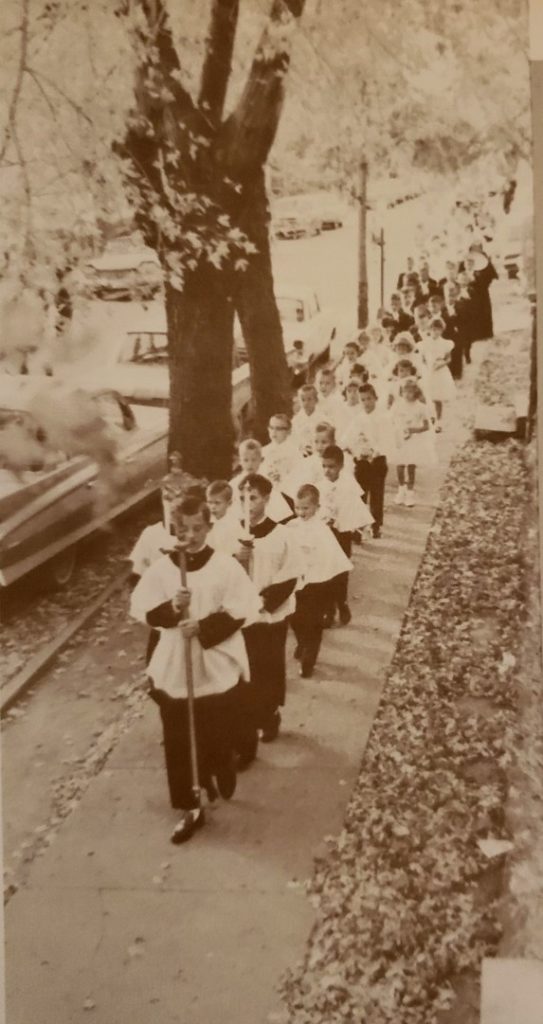by Rita Shelley
During the 19th and 20th centuries, two waves of Lithuanian refugees settled in Omaha, the first in the 1890s and the second after World War II. Though separated by half a century, the two groups shared a common imperative, to escape persecution. For the 300 Lithuanians who settled in Omaha between 1890 and World War I (ultimately 850 by 1918), lives and livelihoods were threatened by Czarist Russia. The post-war cohort endured Nazi and Soviet occupations. After the war, Lithuanian refugees lived in U.S. sponsored displaced persons camps in Germany. According to historical accounts, Lithuanians at the end of the war had three choices: remain in war-torn Germany, risk prison and exile to return to Soviet-occupied Lithuania, or emigrate. The first post-war Lithuanian refugees arrived in Omaha in 1949.
Among that group was Kris Jonyka, whose Christmas stars are featured in one of the displays at the General Crook House Museum’s From the Globe to Our Home: Douglas County Ethnic Traditions exhibition honoring the holiday traditions of many of Omaha’s ethnic communities. The exhibit opens this Sunday, November 7, and will continue through January 9. The stars are made from humble drinking straws, but their beauty and intricacy represent traditions kept alive through successive global upheavals. On Sunday, November 13 at 2:00 p.m., Kris will be demonstrating how she makes the stars and will have straws and instructions in kits available to take home. She will also give a talk about the history of Lithuanian immigration to Omaha. The museum’s Rooted in Diversity exhibit will also be on display.

Traditionally, Lithuanian stars were made from rye stalks but there was no rye in Nebraska. Wheat isn’t pliable. So, Kris thought, why not drinking straws? Thus she fashions infinite combinations from different types of straws – from narrow straws that come with milk cartons to wider and thicker “bendy” straws. To Kris, stars represent the heavens and nature, bringing together a constellation of ways in which Lithuanian traditions matter. Stars are ancient, as is Lithuanian culture with its language as old as Latin. They also represent a world view beyond a single nationality. Stars and the craft that goes into keeping this folk tradition alive also transcend attacks by successive regimes on Lithuanian culture and language. And for a woman who was born in a displaced persons camp and who immigrated to Nebraska with her parents, the craft of Lithuanian stars connects her to the extended family she never knew.

Kris’s parents, Larisa and Juozas (Joseph) Jonyka, brought Kris and her younger brother, Peter, to Omaha when Kris was 2 ½ years old. Her parents’ stories were typical of Lithuanians of their generation – lives interrupted by violence and war. Larisa spoke Lithuanian, Russian, German, English, Polish, and Latvian. Larisa’s father was Chief of Police for the city of Kaunas in southern Lithuania. Juozas, whose family owned a mill and a large farming operation, had just finished graduate school at the University of Vilnius when the Nazis invaded. He taught chemistry and trigonometry in the DP camp. In Omaha, Joseph worked at a concrete company, a smelting company, and at Cudahy packinghouse in South Omaha. Eventually, he earned a civil service classification that qualified him to manage the commissary at Offutt Air Force Base. Larisa and Joseph also owned delicatessens at 32nd and U Streets and at 90th and Maple during the 1960s and 70s. “Their whole future was nothing like they thought it would be,” Kris said.
While no two Omaha Lithuanian immigrant families’ experiences were identical, they share the themes of displacement, loss, participation in a community-centered around St. Anthony’s parish and school at 5402 S. 32nd Street, and eventual assimilation. Aldona Tanner’s daughter-of-immigrants story also carries these themes. Aldona’s father, Joseph Agurkis, had been a partisan resistance fighter during Nazi and Soviet invasions, one of a few who survived. Aldona’s mother, Jane (Janina) also faced harrowing events she miraculously survived. When Berlin fell, the train she was on was bombed. She hid from Nazis while making her way to the DP camp where she and Joseph would meet and marry before coming to Omaha. They also received vital support from St. Anthony’s congregation and leadership during the transition into their new lives.
Founded in 1906 and consecrated in 1907 by the first wave of Omaha’s Lithuanian immigrants, the church that had sustained Omaha’s first Lithuanians in turn sponsored the mid-century arrivals. Reverend Joseph Jusevicius sponsored Lithuanians, raised money, and arranged employment for them in construction and meatpacking. The parish also provided temporary housing, literally, when refugees stayed in the church basement until more permanent arrangements could be found in an enclave south of Q Street between 13th and 36th Streets.

Within a few years, the parish sponsored a choir, a school, language classes, scout troops, folk dancing, veterans, an amateur theatrical group, athletic teams, a youth organization, and a women’s club that provided social and material support for the Lithuanian community. Joseph Agurkis acted in theatrical productions and started a fishing and hunting club.


Kris’s and Aldona’s parents’ generation came to the U.S. with the expectation that they would return to Lithuania when its independence from the Soviet Union was restored, but that didn’t take place until 1991. By then, they had long put down roots here. They had careers and lives that revolved around St. Anthony’s. Their children, who had been born in DP camps or in Omaha, were in their forties. “The longer they had stayed, the more they couldn’t go back,” Aldona says.
Seventy years and counting, Omaha’s Lithuanian community continues its mission to keep traditions alive and to share them in their hometown as a way to honor their heritage.

